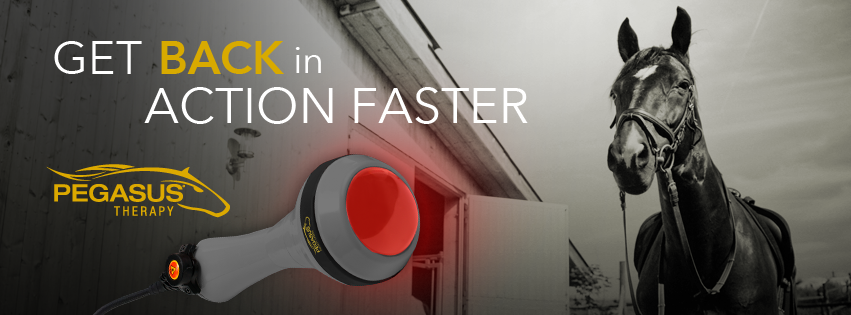The Power of Equine Therapy for Anxiety, PTSD, and Psychological Healing
The Power of Equine Therapy for Anxiety, PTSD, and Psychological Healing
Blog Article
Reviewing the Effectiveness of Laser Therapy in Horse Treatment for Injury Rehab
The examination of laser treatment's efficiency in equine injury rehab depends upon several aspects, consisting of healing time, pain reduction, and cells regeneration. Clinical research studies recommend noteworthy improvements in problems like tendonitis and osteo arthritis, attributed to enhanced mobile feature and raised ATP manufacturing. Veterinarians frequently observe remarkable end results with laser treatment compared to traditional techniques, placing it as an important component in equine treatment. The need for continuous tracking and tailored therapy strategies can not be overemphasized. What specific medical evidence supports these insurance claims, and how do veterinarians execute these procedures in method?
Comprehending Laser Therapy
Laser therapy has come to be a crucial device in veterinary medicine, specifically in the therapy of equine conditions. Recognized for its non-invasive nature and efficiency, laser treatment includes the application of particular wavelengths of light to stimulate cells fixing and minimize inflammation. This therapeutic method is progressively favored for its capability to accelerate the recovery process in horses struggling with a range of musculoskeletal injuries and persistent conditions.
The key mechanism behind laser treatment is its capability to boost mobile functions. Furthermore, laser treatment advertises vasodilation, boosting blood flow and oxygen shipment to broken cells, hence speeding up healing.
In equine medication, laser therapy is particularly helpful for problems such as tendonitis, osteo arthritis, and injury healing. The technique is lauded for its pain-relieving homes, enabling steeds to regain movement and function a lot more quickly. Vets additionally value its marginal side effects compared to other treatment modalities, making it a reputable and risk-free choice for equine treatment.

Just How Laser Treatment Functions

Upon absorption, these photons set off a collection of biochemical changes, boosting mitochondrial feature and resulting in increased adenosine triphosphate (ATP) manufacturing. This increase in ATP accelerates mobile metabolic rate, promoting cells fixing and regeneration. Additionally, laser treatment modulates inflammatory responses by influencing cytokine levels and reducing oxidative stress and anxiety, consequently minimizing discomfort and swelling.
One more significant facet of laser therapy is its duty in enhancing microcirculation. The treatment advertises vasodilation, improving blood flow and oxygen shipment to broken tissues (Equine Therapy). This facilitates the elimination of cellular debris and sustains the expansion of fibroblasts and collagen synthesis, crucial for injury healing
Professional Proof
The effectiveness of laser treatment in equine therapy has been corroborated via different professional research studies, showcasing its therapeutic potential throughout a variety of conditions. Numerous controlled tests and empirical research studies have actually recorded significant enhancements in cells repair, discomfort reduction, and general recovery timelines. For example, a research study performed by Turner et al. (2012) demonstrated that horses treated with low-level laser treatment (LLLT) for ligament injuries showed accelerated healing contrasted to those obtaining conventional treatments. The research study highlighted a marked reduction in inflammation and improved collagen development.
Likewise, research study by Johnson and associates (2015) concentrated on equine muscle mass injuries, exposing that laser therapy considerably sped up muscle mass fiber regeneration and reduced muscle rigidity. These searchings for were corroborated by histological evaluations revealing improved muscle mass cells organization. In addition, scientific evaluations have revealed that laser treatment can ease chronic conditions such see this site as osteo arthritis. A study by Smith et al. (2018) reported that horses with osteoarthritic joints experienced remarkable pain alleviation and raised variety of motion adhering to a program of laser therapy sessions.
Vet Insights

Vets likewise value the versatility of laser therapy. It can be used for a wide variety of conditions, from superficial wounds to deeper musculoskeletal injuries. Dr. Emily Brown highlights its energy in dealing with problems like tendonitis and osteo arthritis, where conventional therapies browse around this site commonly drop brief. She mentions that laser therapy can be tailored to the specific demands of each steed, making certain optimum results.
Additionally, veterinarians value the capacity to incorporate laser therapy with other therapy techniques. This multimodal method can improve general treatment efficiency, supplying an extensive solution for equine recovery. Such endorsements from seasoned specialists underscore the expanding acceptance and application of laser therapy in equine medication.
Practical Considerations
A vital aspect of implementing laser therapy in equine therapy includes recognizing the practical factors to consider that guarantee its efficiency and safety and security. It is critical to select the ideal laser device, as numerous types differ in wavelength, power, and infiltration depth. Vets should be fluent in these specifications to customize treatment procedures properly to each injury kind
Moreover, the frequency and period of laser treatment sessions need cautious preparation to make best use of therapeutic benefits while minimizing any type of possible unfavorable impacts. Regular monitoring of the equine's action to therapy can guide required changes in the treatment regimen. Establishing a risk-free and regulated setting during treatments is likewise necessary to prevent unexpected direct exposure to laser emissions, which could harm both the equine and the handler.
Educating and qualification of employees carrying out laser therapy are paramount to ensure appropriate technique and to copyright safety and security standards. In addition, preserving accurate records of each session, including laser setups and observed end results, is vital for evaluating the overall effectiveness of the treatment and for making data-driven decisions.
Conclusion
Laser therapy has actually arised as a reliable technique in equine injury rehab, using considerable benefits in recovery time, pain alleviation, and cells healing. Medical studies highlight considerable improvements in conditions such as tendonitis and osteo arthritis, credited to improved cellular function and raised ATP manufacturing. Veterinarian observations substantiate these findings, highlighting premium results compared to traditional treatments. For Read More Here optimum results, constant monitoring and customized treatment procedures remain important in leveraging the full possibility of laser therapy in equine care.
Report this page